WALNUTS..... The "New" Cash Crop?
Below you will see how Missouri Black Walnuts are harvested from my own, first experience.
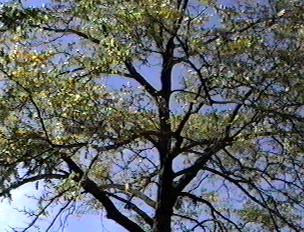
The Walnut Tree
During the 1990s, I lived in a house that had a Walnut Tree in the backyard. This walnut tree was very prolific. It was a "Black Walnut Tree", and it had a height of about 40 to 50 feet.

Many other walnut trees require 3 to 5 years to bear fruit. This tree produced fruit every year. The tree begins to lose it's fruit about Mid-September, and continues to drop nuts for about 30 days. During this time, it was not wise to stand or park a vehicle under it.
The first step is the collection.
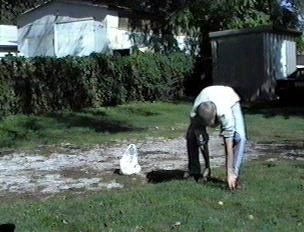
I really would only take half of the total number of walnuts that fell off the tree, so the squirrel family that lived in it, could survive the winter. Unfortunately, the squirrel family would bury the nuts in my yard, which produced saplings in the spring.
The walnuts begin to turn a black color shortly after falling from the tree. Each walnut is about the size of a baseball.
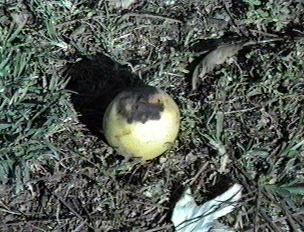
Now that the nuts are loaded into the trunk of my car, (pictured) It's time for the "Turn-In."
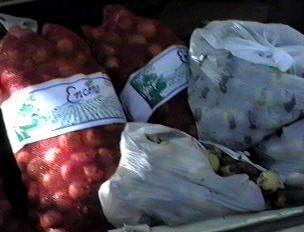

The long awaited day has arrived, for the drive to the turn-in station.
As you arrive at the turn in point you see that there's a
line of vehicles waiting to sell their nuts too. (Go figure.)
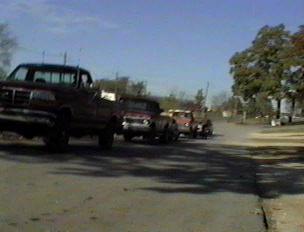
After a relatively short wait, "ITS YOUR TURN!"
The routine is to pull up and prepare to back up to the
hopper where YOU will unload your sacks of walnuts. The
hoppers can handle as many nuts as you can put in them.
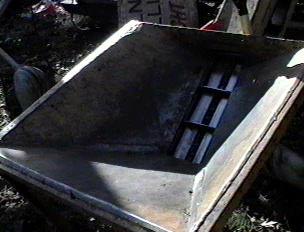
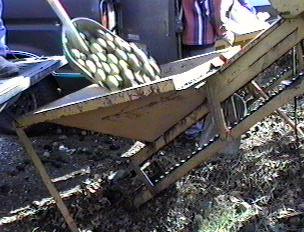
I used gloves, but many
people used shovels to keep from getting the walnut juice on their hands. The juice stains your hands and fingers a "dark green color".
After
putting the walnuts into the hopper. they then travel up a
conveyer belt to the top of the "de-hulling" machine. This
machine removes the hull from around the walnut. The
discarded hull is then loaded on a truck and is removed to
a landfill site.
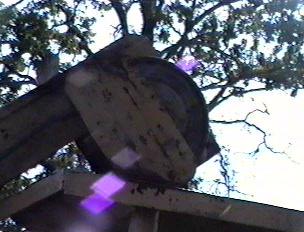
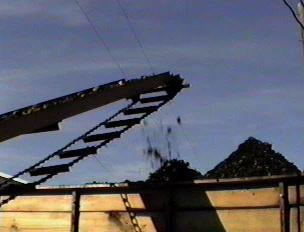

Now you pull your vehicle away from the hopper and park it,
walk around to the other side of the machinery, and see how
many pounds you have turned in. With my tree, (only picking
up half of the walnuts), usually weighs in around 85-95 lbs.
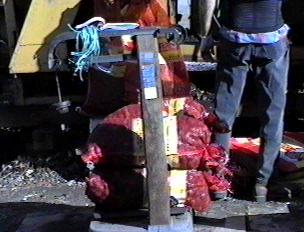
There are several people working
at bagging, weighing and loading the "de-hulled" walnuts. As
you can see in the picture, a triple beam scale is used for accuracy in weighing the nuts. You are then given a slip
of paper with the weight of the nuts written on it, which you turn in at
the "Pay Trailer", and collect your money. This year the tree
yeilded 91 pounds. Be sure to check todays prices at the
bottom of this page.

This routine is repeated by thousands of people every year. Some people use it as a means of extra income, others, like me, just
do it to clean up the yard. Last year 79 tons were brought in at .08 per pound, this year only 42 tons have been harvested.
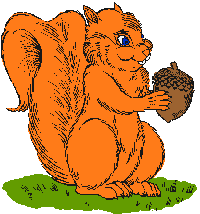
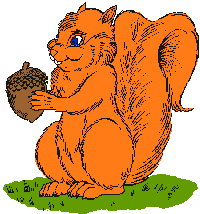
More Pictures of the Turn-In

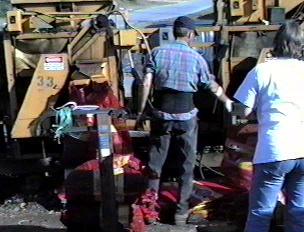
This man is checking to insure that both hoppers are working
properly and nothing is plugging up the exit chutes...
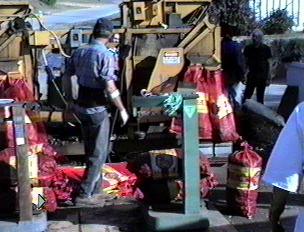
Another picture of the guy checking
out hopper number two...
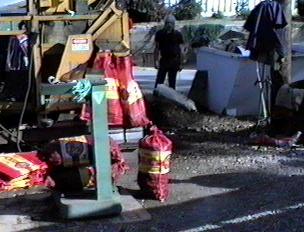
In this picture, you can see two bags hanging from the hopper being filled, and one bag tied and ready to weigh. A pile of empty sacks on the ground is in the left bottom corner of the picture.
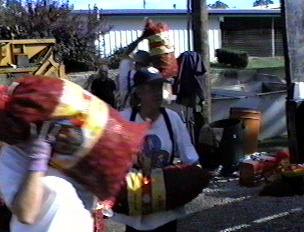
Another helper loads the bags onto the flatbed trailer...
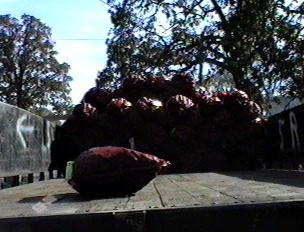
A 53 foot flatbed trailer is being loaded. When fully loaded, the trailer drives to the plant,(In this case, 50 miles away.) There can be as many as four trailers a day turned in.
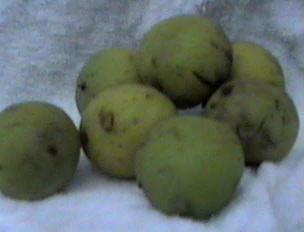
From the raw nut...
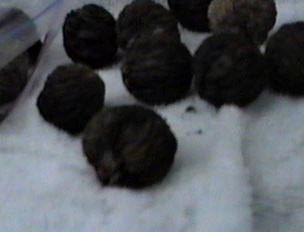
To the dehulled nut...

To finally the finished product! (At your favorite grocery store.) Just a note to say that a lot of people depended on walnuts to survive during the "Great Depression." Picking and cleaning the nuts were one of the only ways to make money for food and other essentials.
I hope you have learned something about the Missouri Black Walnut and have enjoyed my webpage as much as I did in making it.......Thanks for visiting.

